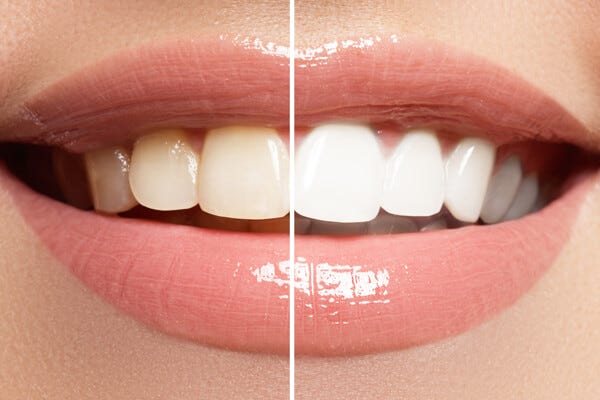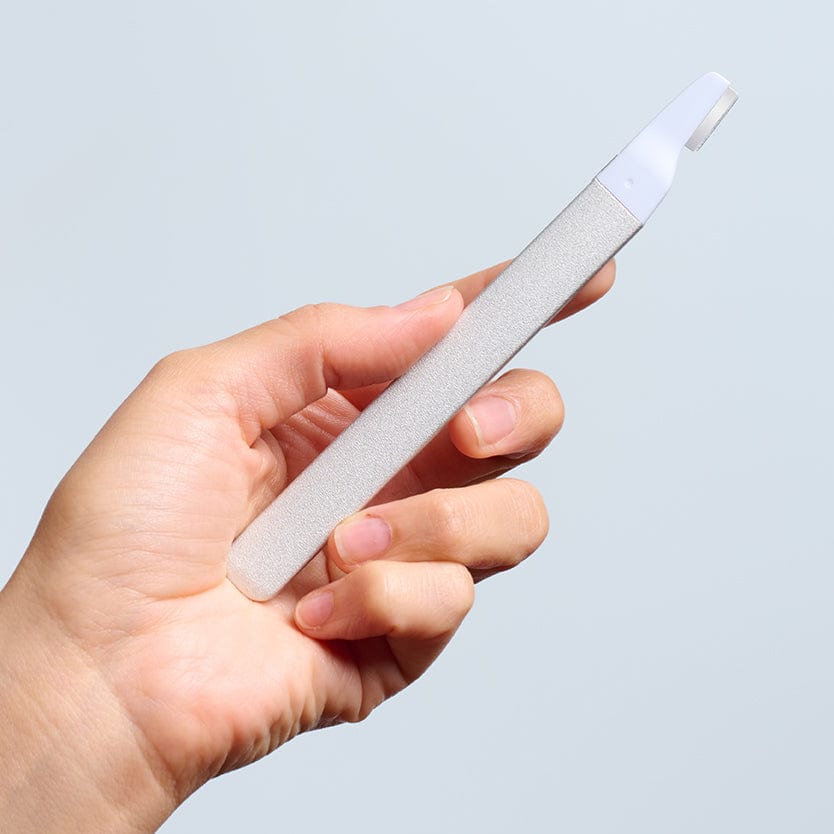Teeth Whitening 101: Brighten Whiten Your Smile
Written by Kerry Benjamin

A white smile radiates both health and beauty and the pursuit for a bright smile dates back to ancient times. Romans were reported to have used urine and goat milk to whiten teeth and ancient Egyptians used ground pumice stone mixed with white vinegar, as they considered white teeth as a sign of wealth and beauty.
Currently, there are several methods to achieve a dazzling smile, including in-office and at-home treatments, as well as natural, alternative treatments.
What is the difference between whitening and bleaching?
According to the FDA, whitening restores teeth to their natural color and bleaching whitens beyond the natural color. Whitening does not alter the intrinsic (internal) color of the tooth while bleach does.
How exactly do these teeth whitening treatments work?
Teeth comprises two layers: 1) the enamel, the clear, translucent layer and 2) the dentin, the layer underneath the enamel that is usually yellow but sometimes gray, brown or black (the color of the dentin is what is seen through the enamel). Whitening solutions work by removing the outer most layers of stains, while bleaching solutions work by opening the pores of the enamel and allowing the solution to reach and lighten the dentin.
What ingredients/compounds/agents are used in bleaching and whitening solutions?
Teeth bleaching formulas rely on a compound called carbamide peroxide, which reacts with water to create hydrogen peroxide. Carbamide peroxide is approximately 1/3 as strong as hydrogen peroxide. For example, a 15% carbamide peroxide solution equals a 5% hydrogen peroxide solution. Carbamide peroxide contains an oxidizing agent that penetrates the pores of the enamel to reach and break down the stains in the dentin.
What are the types of teeth whitening and bleaching treatments available?
According to the American Dental Association (ADA), these include:
- In-office bleaching – uses either the carbamide peroxide or actual hydrogen peroxide in a gel form and with a 10-44% of carbamide peroxide, or 3-16% of hydrogen peroxide. A light-cured protective layer is applied to the gums and papilla (the tips of the gums between the teeth) to reduce the occurrence of chemical burns to the soft tissues. In-office treatment also consists of using power or light accelerated bleaching, which used to be known as laser bleaching (although lasers are no longer used) This method uses light energy to increase the bleaching process. The common types of energy used are halogen, light-emitting diode (LED) and plasma, with halogen being the most used since it produces more measurable results.
- At-home bleaching – custom-made trays are made in a dental office by taking an impression of the patient’s mouth, creating a cast and melting a soft, flexible plastic over the cast. Trays are used at home for a duration of 45 minutes to one hour, two times a week, or, for faster and more intense results, worn overnight for 3-5 days. The bleaching gel is divided into small syringes and is dispensed one drop at a time into the tray’s teeth spaces. The amount of hydrogen peroxide used is usually between 15-18%.
- Non-dental options – spas, mall kiosks or salons that offer walk-in whitening services but at a rate less than what a dentist charges (usually more than half the amount). These service stations train employees to instruct clients on how to use the whitening devices, but employees do not put hands or fingers into the client’s mouths. By law, the amount of hydrogen peroxide used must be 10% or less. The amount of time needed varies per client, but one session is approximately 15 minutes and results can yield approximately 2-8 shades lighter.
- Over-the-counter – includes toothpastes, gums, rinses, pens, strips and gels
What are some of the agents used in whitening?
Silica, aluminum oxide, calcium carbonate or calcium peroxide, which is usually found in toothpastes, but the toothpaste does not lighten like a bleaching agent. Whitening gels use some form of hydrogen peroxide, but not with a concentration as a bleaching gel.
What are some alternative, natural methods to whiten teeth?
The most commonly heard of teeth-whitening method is using crushed strawberries since they contain malic acid, a lightening compound. Apply crushed strawberries to the teeth, let the paste sit for 1 min, then rinse and brush your teeth as usual.
Other natural methods include:
- Mixing baking soda (sodium bicarbonate) and hydrogen peroxide together to form a paste, although dentists highly recommend to not use this regularly
- Rubbing charcoal against the teeth – let charcoal sit 30 seconds to 1 minute, then brush as regular (avoid rubbing the charcoal on the gums)
- Apples, celery and carrots since eating these can stimulate saliva production, which helps reduce stains. Apples also contain malic acid.
- Orange peel – take the rind of an orange, rub the white part against teeth, then brush with a fluoride toothpaste
About the Author

Kerry Benjamin, a licensed aesthetician, has over 14 years of experience. Kerry is the driving force behind StackedSkincare. As the company's CEO, Kerry has dedicated her career to revolutionizing skincare. Her innovative approach combines peels, serums, and specialized tools to effectively address a wide range of skin concerns. CA LE license number Z98459.

